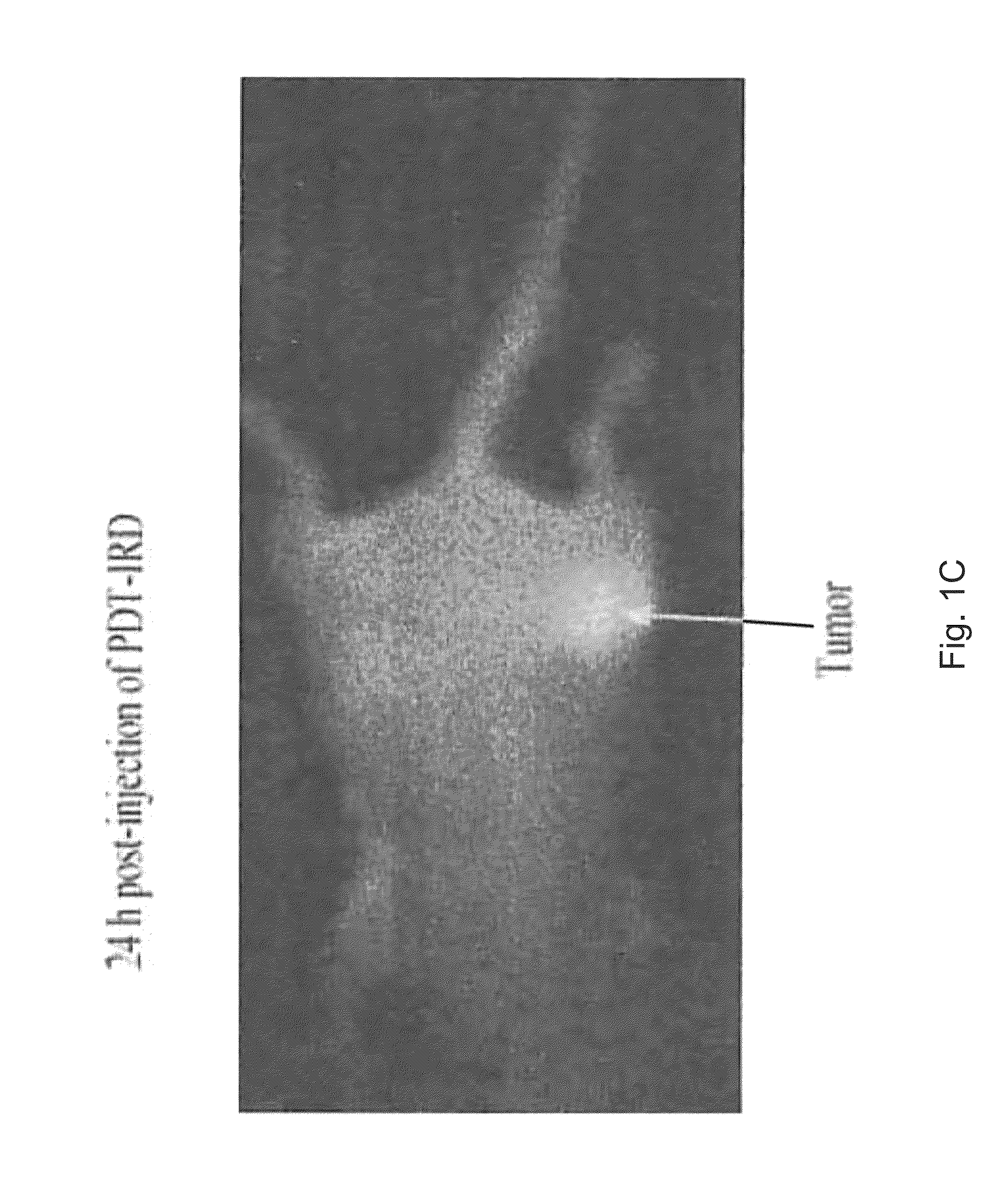PAA nanoplatforms containing fluorophores and targeted moieties covalently linked and photosensitizer post-loaded
a nano-platform and fluorophores technology, applied in the direction of powder delivery, energy-modified materials, medical preparations, etc., can solve the problems of large tumor permeability limitation, low post-loading efficiency, and relative difficulty in incorporating hydrophobic compounds, etc., to achieve enhanced in vitro/in vivo therapeutic and imaging potential, easy functionalization, and good control of size distribution
- Summary
- Abstract
- Description
- Claims
- Application Information
AI Technical Summary
Benefits of technology
Problems solved by technology
Method used
Image
Examples
Embodiment Construction
[0067]Photosensitizers (photosensitizer) generally fluoresce and their fluorescence properties in vivo has been exploited for the detection of early-stage cancers in the lung, bladder and other sites. For treatment of early disease or for deep seated tumors the fluorescence can be used to guide the activating light. However, photosensitizers are not optimal fluorophores for tumor detection for several reasons: (i) They have low fluorescence quantum yields (especially the long wavelength photosensitizers related to bacteriochlorins). Efficient photosensitizers tend to have lower fluorescence efficiency (quantum yield) than compounds designed to be fluorophores, such as cyanine dyes because the excited singlet state energy emitted as fluorescence is instead transferred to the triplet state and then to molecular oxygen. (ii) They have small Stokes shifts. Porphyrin-based photosensitizer have a relatively small difference between the long wavelength absorption band and the fluorescence ...
PUM
| Property | Measurement | Unit |
|---|---|---|
| fluorescent wavelengths | aaaaa | aaaaa |
| radiological half life | aaaaa | aaaaa |
| sizes | aaaaa | aaaaa |
Abstract
Description
Claims
Application Information
 Login to View More
Login to View More - R&D
- Intellectual Property
- Life Sciences
- Materials
- Tech Scout
- Unparalleled Data Quality
- Higher Quality Content
- 60% Fewer Hallucinations
Browse by: Latest US Patents, China's latest patents, Technical Efficacy Thesaurus, Application Domain, Technology Topic, Popular Technical Reports.
© 2025 PatSnap. All rights reserved.Legal|Privacy policy|Modern Slavery Act Transparency Statement|Sitemap|About US| Contact US: help@patsnap.com



